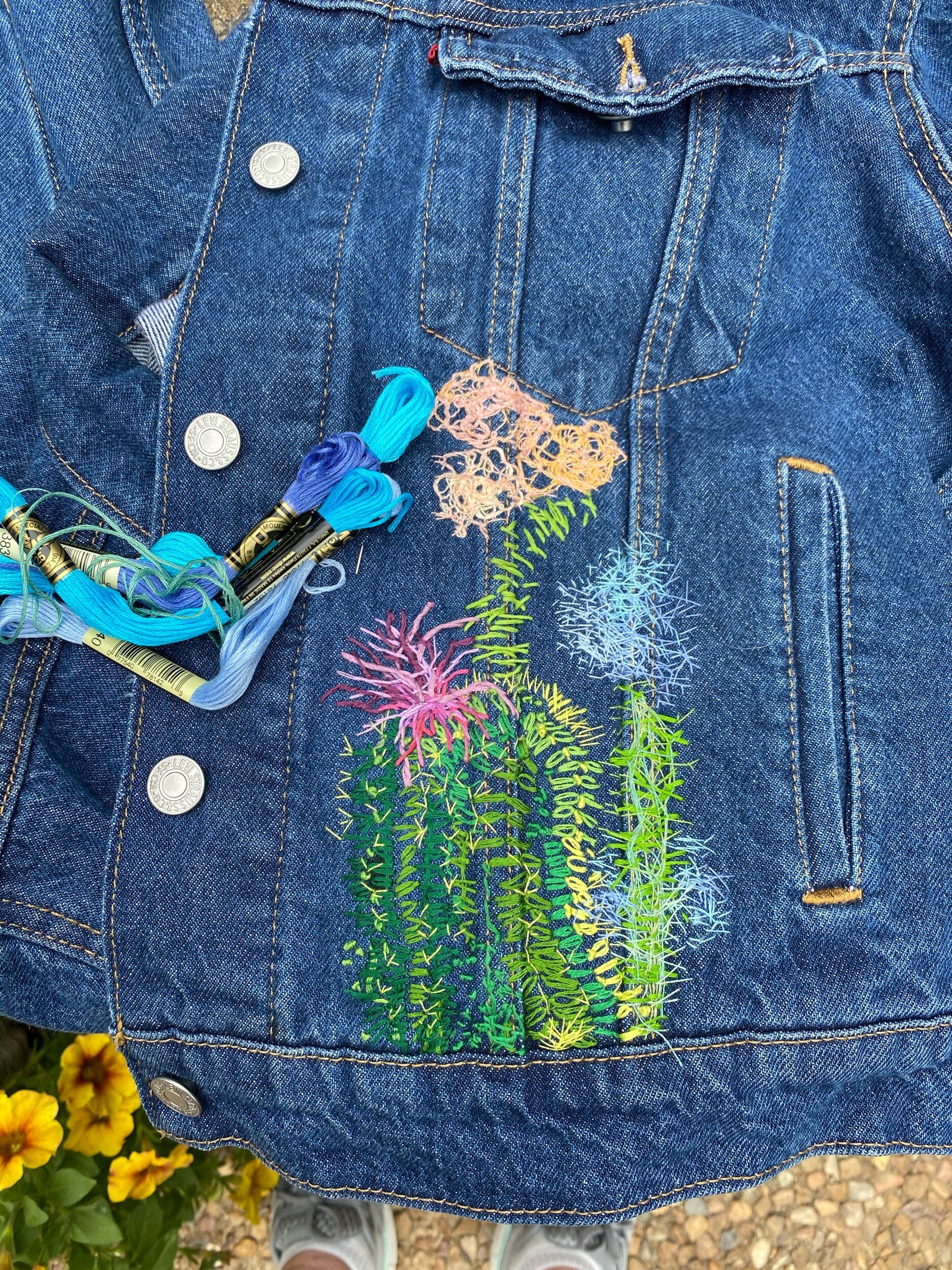Another day of social distancing and not being able to get in my studio. Today's stitching, I added the first of several sweat bees. In reality, they are only about 1/4 ” long. They have beautiful metallic greens and blues. I am working to show more time and movement in my stitching.
I added a tiny sweat bee - he is moving fast and as a result blurry
First I cut some thread of the colors I want the bee to be.
Next I wad them up into a cocoon.
Then I untangle them into the shape of the movement of a bee.
Then I stitch them into the shape of the movement.

















































